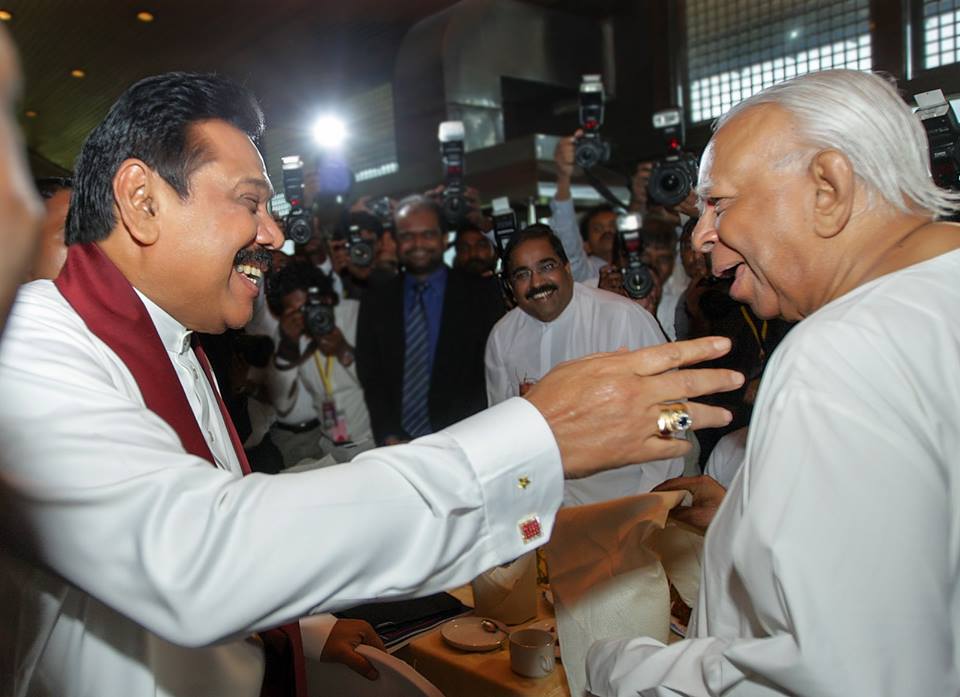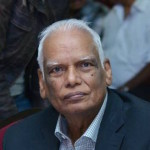A Brief Colonial History Of Ceylon(SriLanka)
Sri Lanka: One Island Two Nations
A Brief Colonial History Of Ceylon(SriLanka)
Sri Lanka: One Island Two Nations
(Full Story)
Search This Blog
Back to 500BC.
==========================
Thiranjala Weerasinghe sj.- One Island Two Nations
?????????????????????????????????????????????????Wednesday, February 28, 2018
Blooming Errors In Sampanthan’s Eelam-Bud Thesis – A Rejoinder

 In politics, Malinda Seneviratne is the junior sibling of Dayan Jayatilleka.
They have many things in common. They both suffer from the majoritarian
mindset and supremacist ideology. They see no merit in
devolution/sharing of power. Both are allergic to the word ‘federal’ or ‘federalism’ because both think rather ingeniously that it will lead to separation.
In politics, Malinda Seneviratne is the junior sibling of Dayan Jayatilleka.
They have many things in common. They both suffer from the majoritarian
mindset and supremacist ideology. They see no merit in
devolution/sharing of power. Both are allergic to the word ‘federal’ or ‘federalism’ because both think rather ingeniously that it will lead to separation.
Despite his faults, LTTE leader remains popular among the Tamils even now. He passionately believed in an independent Eelam and
sacrificed his life and that of his family. He lived a simple life and
was scrupulously honest, unlike the corrupt Sinhalese politicians. His
life and death have no parallel in the long history of Tamils. Tamils
are convinced LTTE leader opted for armed struggle in self-defence as a
last resort because of state-sponsored terrorism by the SLFP and the
UNP governments. Both treated the Tamils shabbily and suppressed their
natural rights to peaceful life and dignity.
The
victory against LTTE by the Sinhala army is a pyrrhic victory because
the causes that led to the war remain unaddressed to this day.
Malinda
and Dayan think that the natural rights of the Tamils depend on the
magnanimity of the Sinhalese majority. But that is not democracy;
democracy is rule by consent, not rule by a tyrannical majority. Though
both Malinda and Dayan will rush to deny that the Tamils lived for
centuries in a Kingdom of their own that co-existed with the Kotte and
Kandyan Kingdoms which is a historical fact. Occasionally, the Kandyan
Kingdom had even matrimonial relationship with the Jaffna Kingdom.
 A
Chief Justice in the British Government, Sir Alexander Johnston wrote
on 01.07.1827 to the Royal Asiatic Society of Great Britain and Ireland
as follow “…I think it may safely be concluded both from them and all
the different histories which I have in my possession, that the race of
people who inhabited the whole of the Northern and Eastern Provinces of
the Island of Ceylon, during the period of their greatest agricultural
prosperity spoke the same language, used the same written character, and
had the same origin, religion, castes, laws and manners, as the race of
people who at the same period inhabited the southern peninsula of
India….”
A
Chief Justice in the British Government, Sir Alexander Johnston wrote
on 01.07.1827 to the Royal Asiatic Society of Great Britain and Ireland
as follow “…I think it may safely be concluded both from them and all
the different histories which I have in my possession, that the race of
people who inhabited the whole of the Northern and Eastern Provinces of
the Island of Ceylon, during the period of their greatest agricultural
prosperity spoke the same language, used the same written character, and
had the same origin, religion, castes, laws and manners, as the race of
people who at the same period inhabited the southern peninsula of
India….”
The
demography of the Eastern province has been drastically altered by
large scale Sinhala colonization from the days of D.S.Senanayake. In
1920 only 4 percent of the population of the Eastern Province was
Sinhalese. The Sinhalese settlements in the east were small and
scattered, even though most of the east came under the umbrella of the
Kandyan Kingdom after the fall of the Jaffna Kingdom. It is only in the
past fifty years that there has been a substantial influx of Sinhalese
settlements through state intervention.
The
island of Sri Lanka, then known as Ceylon, was ceded to the British
Crown in 1802 by the Treaty of Amiens of that year. The map of Ceylon
attached to the Treaty of Amiens call the Arrow Smith Map of Ceylon
depicts the Island of Ceylon as two (if not three) different countries –
a Tamil country composed of the Northeast and a Sinhala country
composed of the South West and central parts.
Sir
Hugh Cleghorn wrote in June 1799 to the UK Government: “Two different
nations from a very ancient period have divided between them the
possession of the Island. First the Singhalese, inhabiting the interior
of the country in its Southern and Western parts, and secondly the
Malabars who possess the Northern and Eastern Districts. These two
nations differ entirely in their religion, language and manners.”
(Malabar meaning Tamil).
Hugh
Cleghorn (1798 – 1800) functioned as the Chief Secretary to the First
Governor, Frederic North (later Earl of Guilford). He organised the
administration and the famous Cleghorn Minute is a classic of its
kind. Before coming to Ceylon he was Professor of Civil and Natural
History at the University of St. Andrews. He was the agent by whose
instrumentality the Island of Ceylon was annexed to the British Empire.
The
Cleghorn Minute of 1799 and the Arrow Smith Map of 1802 are official
proof that the Island of Ceylon consisted of two separate countries.
But
Sinhala-Buddhist extremists dismiss historical evidence with a wave of
the hand. Today the Sinhalese population has multiplied many times due
to state-sponsored colonization. The 4% Sinhalese in the eastern
province in 1920 now stands at 23.15% almost six-fold increase.
When
the Portuguese and Dutch invaded and occupied Ceylon, they continue to
rule the Northeast as a separate entity due to territorial, language,
religion and cultural differences. It is the British that for
administrative convenience amalgamated the Northeast with the rest of
the country in 1833 on the recommendation of the Governor Colebrook –
Cameron commission.
Rightly
speaking the Tamil people instead of asking for 50:50 should have asked
for the restoration and reconstitution of the Jaffna Kingdom ruled by
their ancestors. This they failed to do because of the deception of DS
Senanayake who promised the Tamils and other minorities that no harm
will befall the Tamils at the hands of the majority in an independent
Ceylon!
On
October 1945, D.S.Senanayake, the first Prime Minister of independent
Ceylon, GAVE THE FOLLOWING SOLEMN PROMISE TO THE TAMILS and other
minority communities `NO HARM NEED YOU (NON-SINHALESE) FEAR AT OUR
HANDS (SINHALESE) IN A FREE LANKA.
He was speaking in the State Council in October 1945 when all the Tamil
members had unanimously voted for the acceptance of the Soulbury
constitution in a White Paper.
‘Do
you want to be governed from London or do you want, as Ceylon, to help
govern Ceylon? On behalf of the Ceylon National Congress (founded by
Sir Ponnambalam Arunachalam in 1919) and on my behalf, I give the
minority communities the sincere assurance that no harm need you fear at
our hands in a free Lanka’ he rhetorically asked.
Again
addressing the State Council on November 8, 1945, D.S. Senanayake went
on to reiterate “We devised a scheme which gave heavy weight age to the
minorities; we deliberately protected them against discriminatory
legislation; we vested important powers in the Governor-General because
we thought that the minorities would regard him as impartial; we decided
upon an independent Public Service Commission so as to give an
assurance that there should be no communalism in the Public Service. All
these have been accepted by the Soulbury Commission and quoted by them
as devices to protect the minorities.”

